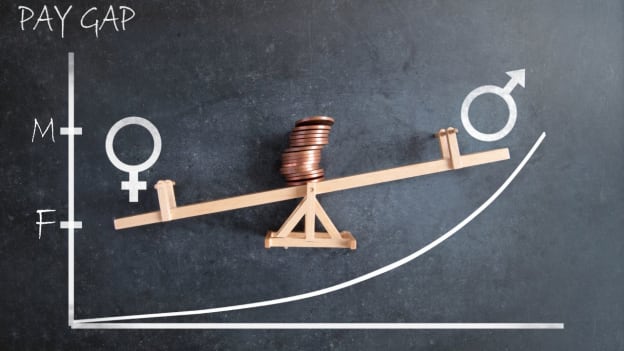Japanese firms' strategies for advancing women's careers

In Japan, the gender gap persists, with women earning just 70% of men's salaries and witnessing minimal representation in leadership roles.
One study by WTW, Symphony Financial Partners, and Xebral revealed that gender pay gaps persist in large Japanese firms compared to other Organization for Economic Cooperation and Development (OECD)nations.
The study found women in Japanese-listed companies earn on average 67.04% of what men earn. Part-time female employees fare slightly worse at 69.65% compared to full-time female employees at 71.64%.
Gender pay disparities vary by industry. Air transportation, banking, fisheries, agriculture, and forestry show the widest gaps, while information and communications, securities, commodities futures, and iron and steel industries have narrower disparities.
Women are significantly underrepresented in leadership roles in these companies. They hold only 13.11% of board and officer positions and a mere 9.47% of managerial roles on average. Interestingly, larger companies are more likely to appoint female board members but lag behind smaller firms in placing women in managerial roles.
Read More: The status of women working in Southeast Asia
Among industries with high female managerial representation, air transportation leads, followed by services and insurance. In contrast, construction, mining, and transportation equipment have the lowest female representation in managerial positions.
Recognising the need for gender diversity, Japan’s Ministry of Health, Labour, and Welfare (MHLW) has revised the Act on Promotion of Women's Participation and Advancement in the Workplace. It mandates large employers with 301 or more employees in Japan to annually disclose gender-based pay differences.
Experts stress that companies must go beyond numerical disclosures. Takaaki Kushige, Senior Director at WTW, emphasizes the need to provide detailed actions demonstrating commitment to improving corporate culture.
This study analysed nearly 2,800 Japan-listed companies, of which 1,998 disclosed human capital data in their annual securities reports in June 2023. These findings highlight the need to retain women in career paths and close the gender gap in professional growth.
Understanding the global gender gap
Worldwide, the gender gap remains significant, with women facing challenges in finding employment. When employed, women often occupy low-quality jobs and encounter limited improvements.
The global labor force participation rate for women stands at under 47%, compared to 72% for men, with more substantial gaps in some regions exceeding 50%.
Northern Africa and the Arab States have high unemployment rates for women, exceeding 20%. Vulnerable employment is common for both genders, with women more likely to be involved in household businesses.
Read More: Gender gap has remained almost unchanged for two decades : ILO
Why closing the gender gap matters
Closing the gender gap is crucial not just for human welfare but also for the economy.
Reducing gender disparities in labor force participation can substantially boost global GDP, especially in regions with large gender gaps.
Developed countries could experience increased annual GDP growth, particularly during economic stagnation.
Women's work preferences
Surveys by the International Labour Organization (ILO) and Gallup reveal that most women prefer paid jobs. However, socio-economic constraints and societal pressures to conform to traditional gender roles influence their choices.
Factors like gender roles, work-family balance, transportation availability, and affordable care affect women's employment choices, varying across regions, religions, and households.
Empowering women in Japanese corporations
To address the lack of gender diversity in managerial positions, some Japanese businesses are taking proactive steps. For instance, Kirin Holdings has implemented a fast-track career development program for women. Nissan Motor has established meetings to discuss women employees' promotions.
Challenges persist, including women managers' concentration in head office positions and limited representation in R&D or production roles. Nissan aims to foster a more inclusive corporate culture.
Government initiatives and the path forward
The Japanese government encourages companies to appoint at least one woman executive by 2025, recognising diversity's importance. Over 60% of institutional investors consider women's advancement metrics when making investment decisions.
Japan's progress in closing the gender gap may be slow, but younger generations of Japanese women desire managerial roles, reflecting shifting societal expectations.
The gender gap in professional growth remains a pressing issue globally. Strategies to retain women in career paths and promote gender equality are essential for economic growth and innovation. By implementing proactive measures and fostering inclusive cultures, companies and governments can empower women in the workforce.
















